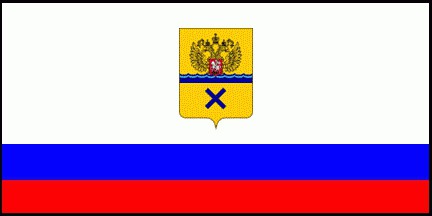The coat of arms of Orenburg and the flag. Description and meaning of urban symbols
Orenburg is a large city in the south of the Urals with a population of 460 thousand inhabitants. The article will deal with the symbols of this locality. The coat of arms and the flag of Orenburg - what are they? And what is the meaning of them?
Orenburg: brief biography of the city
The first mention of the city on the banks of the Ural River dates back to 1735. It was then that the Orenburg fortress was laid here.
All researchers agree that the namecity comes from the phrase "fortress on Ori" (just at the point of the confluence of Ori in the Urals and the city was laid). Most likely, such a name Orenburg gave I. Kirilov - the initiator of the beginning of the development of this region. He argued that in this place it is simply necessary to build a city in order to open the way to Central Asia and India.
Orenburg, in fact, tried to found three times. Initially, V. Tatishchev (head of the expedition for development), it seemed that the selected area is too much flooded with spring floods. As a result, the construction was moved to another place - on the Red Mountain. However, it turned out that the territory there is completely treeless, with stony soil. And the new head of the expedition laid the city for the third time, in another place (that is where the old city is now located).
Nevertheless, the original name "Orenburg" was decided not to change.

It is curious that in the middle of the twentieth century, under the Sovietpower, the city for some time was called Chkalov - in honor of the famous pilot. Despite the fact that Valery Chkalov himself was never in Orenburg, on the embankment of the Ural River, in the center of the city, in 1956 he was installed a six-meter bronze monument.
The coat of arms of Orenburg: description and its history
At the heart of the modern coat of arms of the city is the shieldclassical form, pointed downward. On a gold background is depicted a two-headed eagle, crowned with a large imperial crown. He seems to come out of the blue waves, under which is the blue Andreevsky cross.
It is obvious that the blue ribbon on the coat of arms is the localthe Ural River. The eagle symbolizing the state power is black, with golden beaks and red tongues. In total, on the coat of arms of Orenburg, you can count three imperial crowns - two on the heads of the eagle and one - in the upper part of the shield.

The first coat of arms of the city of Orenburg was approved back in 1782year. Before that, the settlement had withstood the five-month collateral of the pen of Emelian Pugachev. For the fact that Orenburg resisted the onslaught of a large army, Catherine II awarded him the Andreevsky cross - the highest order of tsarist Russia. That is why this cross is present on the coat of arms of Orenburg.
Talented artists and designers from different regions of the country worked on the reconstruction of the city emblem of Orenburg. Among them - Mikhail Medvedev, Konstantin Mochenov, Olga Salova.
The coat of arms of Orenburg and its meaning
The modern coat of arms of the city is a confirmationa huge contribution of Orenburgers to the development of the country. For the entire history of Orenburg, they have proved to be both reliable defenders, and as workers. And the double-headed eagle flaunts on the city coat of arms is not accidental. So the Orenburg people were thanked for their great services to the Motherland.
What do the symbols of Orenburg symbolize? The golden background of the shield of arms is, above all, a sign of prosperity, stability and wealth of the region. The blue color represents high spirituality, pure thoughts and nobility of the inhabitants of Orenburg.
The red color symbolizes strength, dedication and courage, and black is a symbol of profound wisdom and modesty at the same time.
Flag of the city of Orenburg
The official flag of the city is not much different fromhis coat of arms. This is a standard rectangular cloth with a size of 2: 3. Exactly in the middle of it crosses a wavy blue strip, symbolizing the Ural River. On the golden background of the flag - the same black two-headed eagle, and under the river's ribbon - the blue Andreevsky cross.

The renewed flag of Orenburg was raised for the first timeflagpole in August 2012. In its development, the historical coat of arms of this locality was taken as a basis. Until then, the city symbol looked a little different.
It should be noted that for all the time of independenceRussia, the flag of Orenburg was changed three times: in 1996, 1998 and 2012. All previous versions of the same Russian tricolor, in the center of which was placed the coat of arms of Orenburg, but with the eagle of the modern Russian Federation. In 1996 and 1998, the sizes and proportions of the flag bands only changed.

Later the heraldists noted that such a flagcontradicts the existing laws of the country, and offered to change it, in particular, to place on it the Catherine's two-headed eagle. So it happened: in 2012 the new flag of Orenburg was established.
Conclusion
Orenburg is a large city in the southern Urals, the centerof the same name of Russia. The coat of arms of Orenburg is decorated with a double-headed crowned eagle that emerges from the blue waves of the Urals. And below is the blue Andreevsky cross. In the color design of the city's symbols there are four qualities: honor, courage, wealth and modesty.
Orenburgers are a proud, courageous and industrious people. And the Orenburg coat of arms clearly confirms this.








